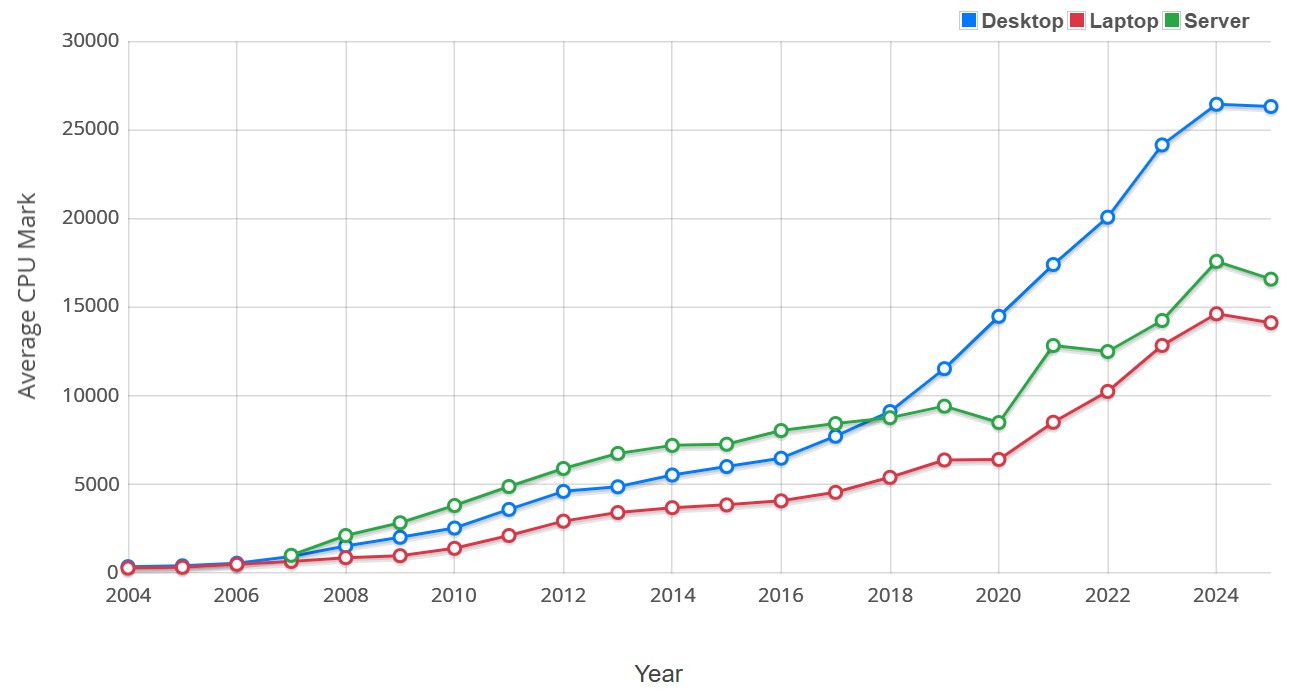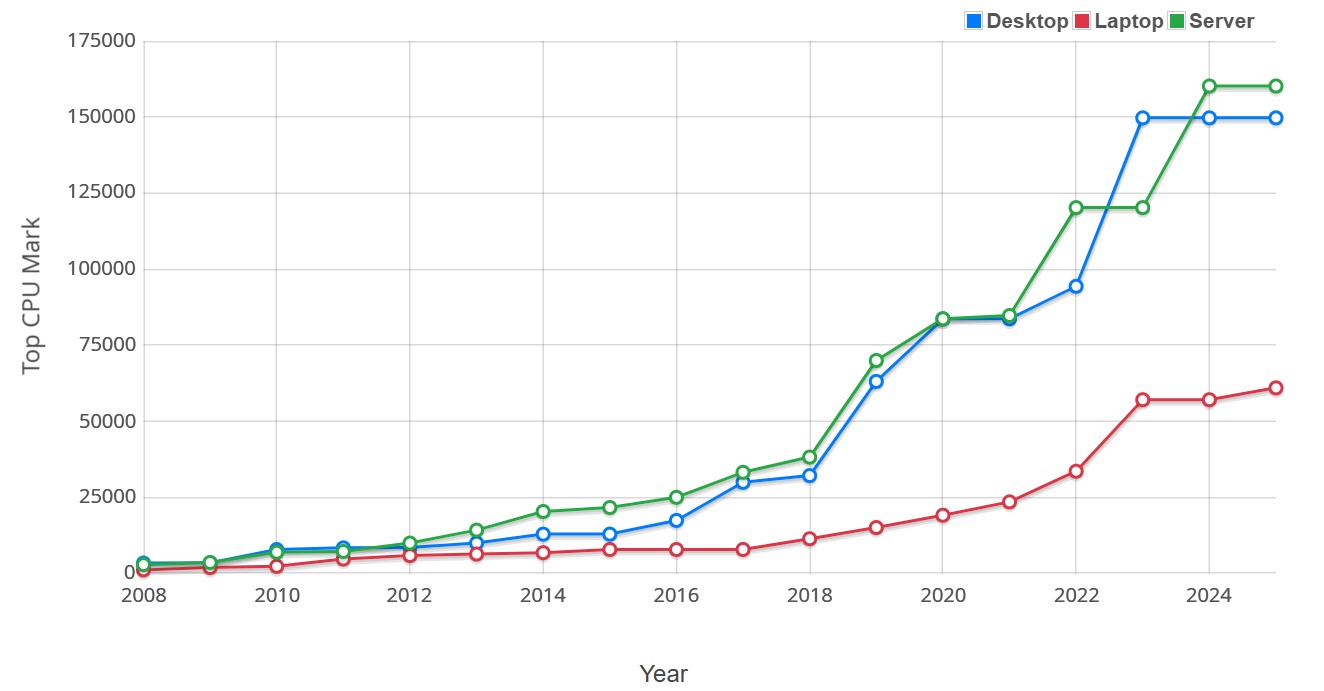For the first time since 2012, CPU test scores for laptops and desktops are no higher than a year earlier. It is unclear where the dip came from, although there are possible reasons.
Processor manufacturers claim year after year to offer more horsepower with their latest and most powerful chips. However, for the first time in more than 20 years, innovation in the chip world does not seem to be translating into faster computers. That’s according to figures from PassMark, which has offered benchmarking software since 2012 and compiles results into a chart biweekly.
That graph has a distinct kink. Since 2012, average scores have been higher year after year. Around 2016, they even take off, especially among laptops. In 2024, PCs tested were even more powerful than in 2023, but the first figures from 2025 show an unprecedented dip.
Desktop performance falls 0.5 percent, according to the figures. For laptops, the dip is 3.4 percent. Servers see a decline of 5.7 percent.

The results do seem representative. Throughout the year, PassMark will update the chart, but already the company has nearly 48,000 test results available for desktops, and 25,000 results available for laptops. Last year’s data are based on 186,000 and 101,000 samples, respectively. It is notable that even server performance is in decline, although PassMark has fewer results there (17,000 samples last year versus nearly 2,000 now).
Possible explanations
There are several possible explanations. The most plausible is value for money, with customers opting for balanced and efficient configurations that are not necessarily more powerful. Intel and AMD additionally screen with enhancements such as NPUs, but those actually benefit end users very little.
Chips continue to be optimized for better device autonomy and lower power consumption. This manifests itself in designs that are sometimes less capable in brute processing power, and that’s just something benchmark tests focus on.
For the decline in laptops, it is tempting to point to Intel’s disappointing chips. These have fewer and fewer performance cores on board, especially in the mid-range segment. All sorts of additions such as E cores and accelerators should charm users, but based on our tests, certainly the latest generation of laptop chips is not that attractive.
However, that explanation also rattles. What is happening in laptop land has no direct impact on server chips. Indeed, under the impetus of AMD Epyc, increasingly powerful CPUs are available there. Still, scores are falling there, too.
No higher tops
PassMark also measures the top performance of CPUs every year. There the evolution has been stagnant since 2023. For the desktop the peak score was reached then, laptops still climb a little but not much.

The scores are surprising to say the least. Passmark is a reliable name with many results to look back at over the years. Based on those results, it seems that the evolution in CPU power no longer translates directly to the devices people and businesses are buying.
